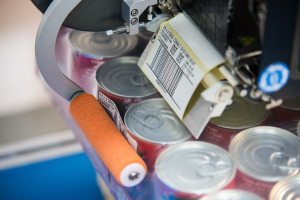Cobalt Continuous Operation Systems
The Cobalt Continuous Operation Systems solution is designed to eliminate downtime associated with label replenishment or system maintenance. In the long run, it helps avoid unnecessary disruption and lost revenue. Cobalt Continuous Operation Systems are dynamic labeling systems where two or three machines work in rotation to keep the production line running at maximum efficiency.

Overall Equipment Effectiveness (OEE) is key in high-speed packaging lines. We understand that downtime means disruption and lost revenue.
With label applicators, there is no need to stop for label replenishment or preventative maintenance. This allows your lines to run uninterrupted. The systems also provide an excellent return on investment for lines running at 40 packs per minute or more.
Nexus applicators operate at an efficiency rate of 99%. Every part is designed, manufactured and selected to support 24/7 high-speed operation. Every critical component is optimized to provide longer, trouble-free operation. As with all NEXUS 20 inline printing and application systems, the system features fast and reliable on-board automatic verification with the built-in Cobalt Sentinel verifier.
 Case Study: North-West Food Producer
Case Study: North-West Food Producer
Cobalt Systems recently installed a Print & Apply labelling automation solution at a North West food processing plant for an international food producer as part of a green programme to remove plastic packaging and improve environmental factors.
The end-of-line project, which formed part of the packaging area, was part of a refurbishment of previously installed equipment, as Cobalt UK Sales Director Chris Hunt explains; “We have a long-standing relationship with the food producer’s barcode automation supplier, so we were excited by the challenge of maintaining production speed and efficiency, while incorporating a range of features that reduced environmental impact into this print and apply labelling project.”
As part of the green programme, the food producer developed cartons that could withstand the weight of heavier goods such as cans and tins. This packaging development reduces the amount of shrink wrap, but maintains the stability of the cans.
“The labels are applied to the front of the trade-in units (TUCs), with the wide leading edge,” Hunt explains. “The label is printed and applied to the front of the package, then wiped with a roller. This application works very well for heavier items such as cans or tins. We also have multiple height positions for different package sizes that the operator can select from the HMI.”


